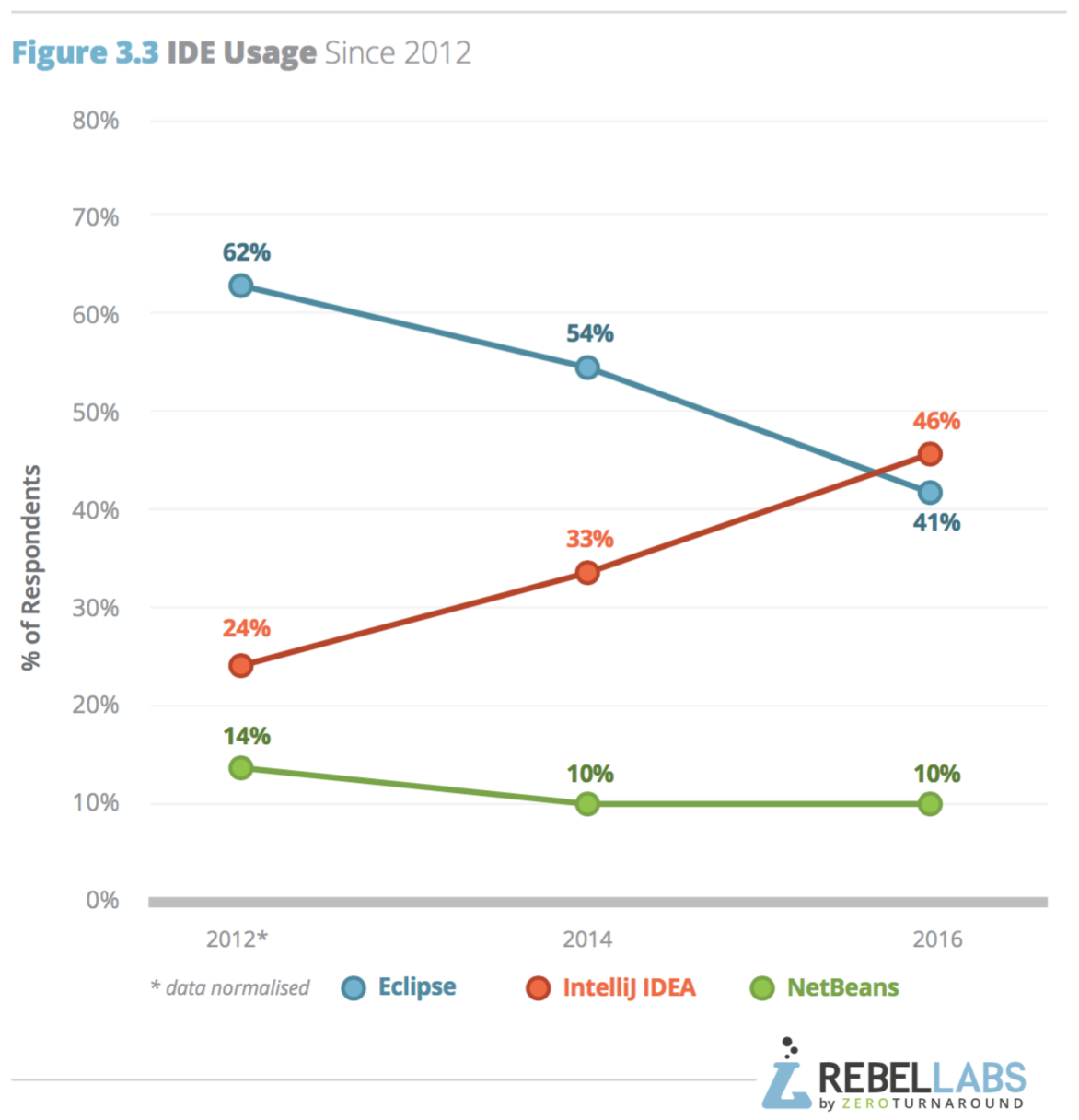System on a chip Updated 2025-07-16
Eclipse (IDE) Updated 2025-07-16
Once upon a time (early 2010's), Eclipse dominated the IDE landscape and all was good. NetBeans was around too. And Java was still unmarred by Google LLC v. Oracle America, Inc..
But then something happened.
And the project that had once been a vibrant community of awesomeness, started to become... a zombie of its former self.
Buggyness started increasing. And not even hard to fix bugs. One liners that affect every user immediately after startup.
Sometimes, to Eclipse's defense they weren't "bugs". Just features that it became evident with time every programmer expected from a modern IDE.
But somehow the Eclipse community had a deep problem. A cancer. It had completely lost touch with user experience.
Perhaps is was due to the increasing interest of the several corporations that had adopted Eclipse as the base IDE for the proprietary solutions?
Perhaps.
Many users stuck to the IDE.
Some heroic efforts were made as plugins that drastically improved certain defects. The Darkest Dark plugin comes to mind.
But all those efforts required configuration. A setup time that most users simply don't have. The core devteam had become dumb and dead, unable to incorporate such changes.
This greatly opened up the space for other competing IDEs to come along. The "semi feature complete but at least easy to use and not so buggy" Visual Studio Code and the proprietary JetBrains IDEs being some of the most notable ones.
Using Eclipse as of the early 2020's is such a mixed experience. If you spend enough time to configure out the key buggyness, there are moments where you can feel "OMG, this feature is amazing".
But the effort is just too great, and soon another bug or obvious missing feature hits you and brings you back to reality.
Every young person uses VS Code now. Eclipse is dead, and there is no way back, usage will just continue dropping.
Bibliography:
Morphology (linguistics) Updated 2025-07-16
Open source video game library Updated 2025-07-16
Students must have a flexible choice of what to learn Updated 2025-07-16
Ciro believes that the only thing students must be forced to learn is to speak read and write English and that a teacher's main job after that is to help students find their next big goals and also ties into the backward design philosophy.
Everything else, the student must choose.
This idea is generally known as self-directed learning.
This is most notable in University entry examinations of poor countries, where students often have to waste one extra year of their lives to go through preparation for the useless university entry exams. And then, surprise surprise, if they actually get in, they find that this is not what they really wanted to do, and they just go through to the end miserably because they understandably they don't want to risk another year of their lives.
And importantly: It must be easy to change your area of study.
Steve Jobs's university dropout stories from Steve Jobs' 2005 Stanford Commencement Address also come to mind.
Interesting projects:
The Purpose of Education by Noam Chomsky (2012)
Source. - 0:00 discusses Education as a system of indoctrination: indoctrination for people to comply with the Establishment and pass tests, vs the Age of Enlightenment in which education should help you achieve your own intellectual/life goals. He suggests without specific evidence that after the 60's there was explicit intervention in the US to increase the indoctrination aspect, of which debt is a part.
- 15.45: assessment vs autonomy: exams are useless, except as a tool to help improve teaching and self assess. Tells anecdote about little girl who wanted to learn more about a subject, asked teacher how to learn more, teacher said you can't, you have to study for this useless national exam instead which will determine your future, and if I'm rehired or not.
Godfrey Hounsfield, 1979 Nobel Prize in Physiology and Medicine:[ref]
They tried hard to educate me but I responded only to physics and mathematics
Telegraph Updated 2025-07-16
Thought experiment Updated 2025-07-16
Tit for tat Updated 2025-07-16
Related ideas:
Urban Dictionary Updated 2025-07-16
German (language) Updated 2025-07-16
Hindi Updated 2025-07-16
Intelligence analysis Updated 2025-07-16
Islam character Updated 2025-07-16
Islam has some really nice things in it.
Ciro Santilli especially appreciates the ideas of
Phase-contrast microscopy Updated 2025-07-16
Title sequence Updated 2025-07-16
Hand-waving Updated 2025-07-16
Heartbeat (computing) Updated 2025-07-16
Internal communications Updated 2025-07-16
Lifestyle business Updated 2025-07-16
Quantum advantage Updated 2025-07-16
Similar to quantum supremacy, but add the goal that the computation must be useful, i.e. make money or solve some open mathematical problem, Ciro Santilli's wife was quite excited about the possibility of finding some counter examples in number theory with quantum computers.
There are unlisted articles, also show them or only show them.
